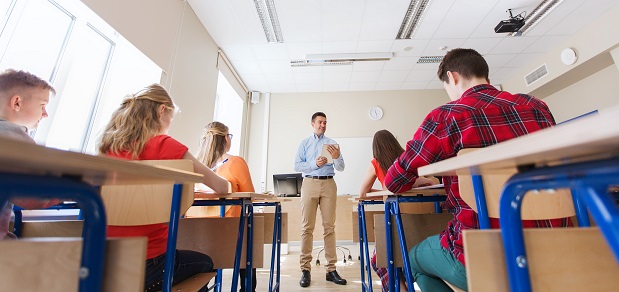
Sociology is a fascinating subject which enables learners to develop a real understating of how society works. Many students are captivated by some of the debates covered in Sociology A-level, and for the first time they can become immersed in a subject, whilst seeing the relevance of it in the society in which they live. Although in my classroom I spend time fostering an enquiring nature in my students with regards to contemporary issues, I knew I wanted them to experience more – I wanted to make sociology more hands on and holistic. So there was only one thing for it – I was going to have to take them outside of the classroom.
Organising any residential trip within an educational establishment can be a daunting task with vast amounts of paperwork to complete. But do not let this be off-putting, as the enrichment students are able to gain is fantastic and worth it, I promise.
I decided that a good destination to see sociology in action would be LA and San Francisco. So after 30 excited learners boarded a plane at Heathrow we were on our way. I never expected this but for a few leaners it was their first time on a plane, which made it even more thrilling.
Safe, sound and sleepy we made it to LA where we had an action packed itinerary planned. First stop was Olvera Street, the area of LA where Spanish people settled. It was here where students were able to analyse the impact of multiculturalism on the demographic make-up of the United States. After this we ventured onto Hollywood Boulevard, where bursting with excitement and busy spotting stars, students were able to assess America’s impact on global, popular and celebrity culture, alongside understanding where the centre of film making is. Next we were onto Universal Studios. What a fun way to see how the media can create special effects and how social media can now be used to promote popular culture and solidify social trends.
After three action packed days it was time to move onto San Francisco, where not only did the weather take a turn for the worse but so did the mood. San Francisco, Silicon Valley, the capital of technology, is sadly also the capital of social inequality. This was where sociology really helped students to show empathy and sensitivity in discussions about poverty, welfare, the divide between rich and poor, and disability. Our students handled this with such a level of maturity and were able to explore complex debates surrounding inequality. I don’t think I could have ever created this depth of discussion in a classroom.
San Francisco also hosts the largest town outside of Asia, and again it was important to show students multiculturalism. San Francisco hosts many multi-cultural quarters and this is evident when moving from quarter to quarter. Learners were able to see both assimilation and the protection of ethnic identity. Most importantly they were able to see how hybrid identities are created and how people can live side by side in one city. On top of this was the food. In fairness, we had to do a random sample of all cultures’ cuisine to make an informed assessment of which we preferred! And of course no trip to San Francisco would be complete without a trip to Alcatraz. After watching the iconic state penitentiary from the boat, we stepped off onto Alcatraz Island and were able to learn about the history of Alcatraz and how inmates were treated. Touring the world famous prison was both eerie and atmospheric, and above all this ensured debates surrounding crime, control and punishment prevailed. Once again all students handled this with admirable levels of maturity and were able to really engage with that particular part of the A-level syllabus. Exploring this part of learning outside of the classroom really brought the topic to life.
After our time in San Francisco we truly were shattered and the plane ride home was much more subdued than our outbound journey. There was a reflective tone and discussions between groups of students were centred on the trip and things they has seen and experienced. I knew this would not end here, and that their enrichment trip would be something they will never forget. They also developed a greater understating of sociology and deeper passion for a subject which helps then to understand the world in which they live.
Taking Sociology outside of the classroom really paid off – I wouldn’t hesitate to do it again.
Judith Copeland



